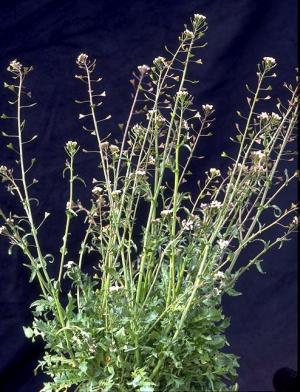CONTENTS
Registered Herbicides
[Return to weed
Identification]
[Return to Weed
Management]
[Home] |
|

General Description:
- erect stems grow 3- 18 inches tall from a basal
rosette.
- alternate leaves with lower leaves more deeply lobed
than upper
- upper leaves clasp the stem.
- small white flowers at the end of long racemes (
flower arrangement along a stem on individual stalks).
- petals and sepals are arranged in fours.
- flatttened heart-shaped fruit with 2 cells containing
many small, oblong, grooved, red/brown seeds.
- taproot (may be branched) with secondary fibrous root
system.
Life cycle: annual
- reproduces by seed.
- seeds germinate early spring, summer, and early fall.
- hypocotyl (stem below cotyledons) typically has purple
coloring.
- cotyledons are egg-shaped with taper at petiole.
- young rosettes have variable degree of lobes on
leaves, older leaves are more consistently deeply lobed.
- flowers early spring through September.
- a single plant may produce over a 1000 long-lived
seeds.
- plants die soon after fruiting.
Habitat/ Crops associated with:
- widespread in cultivated fields and gardens.
- associated with wheat, alfalfa, mint, and cultivated
vegetable production.
- also found along roadsides and waste areas.
Herbicide Control Notes:
- Goal, Sinbar, and Karmex/Direx are effective when
applied early. Add Gramoxone to residual herbicides if plants are well established.
|